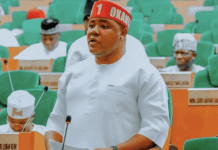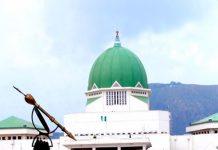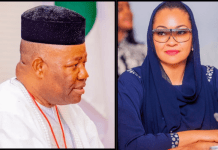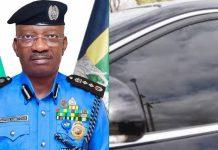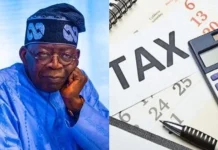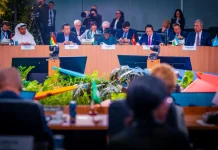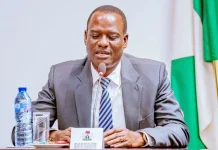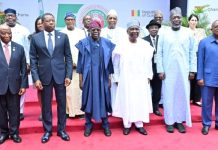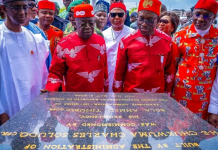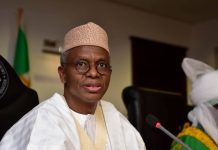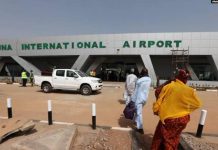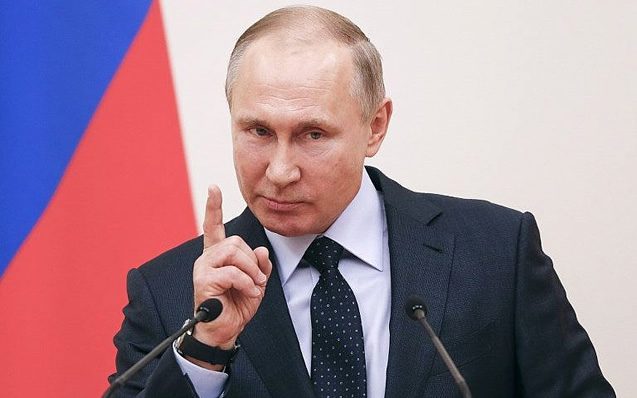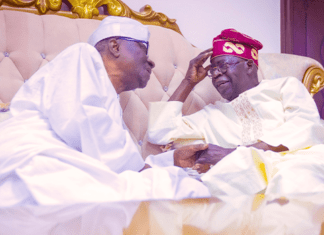

The voting process in Russia is ongoing, with incumbent President Vladimir Putin widely anticipated to secure his fifth term as the country’s leader.
Putin is running as an independent candidate.
According to Al Jazeera, other candidates are perceived as “figureheads” and included in the process solely to show Putin’s popularity.
The three-day voting started on Friday, March 15, 2024.
However, based on the 2020 constitutional amendment that invalidated his previous terms, the upcoming March 15–17 election will be considered his first one.
112 million people aged 18 and above in Russia are eligible to vote.
People in annexed Crimea and occupied parts of Ukraine will also vote.
Putin has served four terms.
If he wins, the 71-year-old is anticipated to hold power for an additional six years, courtesy of the 2020 constitutional amendment.
Putin, born on October 7, 1952 in Leningrad, Russia, is a Russian intelligence officer and politician.
He held the position of President of Russia from 1999 to 2008 and again from 2012 onwards.
Additionally, he has also served as the country’s prime minister in 1999 and from 2008 to 2012.
Below is a timeline of Putin’s 25 years as a leader of the Eastern Europe federation:
- Putin has an extensive background in foreign intelligence, having spent 15 years working for the KGB (Committee for State Security).
- Shortly after, Putin began working as an advisor to Anatoly Sobchak, who was the first democratically elected mayor of St. Petersburg.
- By 1994, he had ascended to the position of first deputy mayor.
- In 1996, Putin relocated to Moscow and became a part of the presidential staff, serving as the deputy to Pavel Borodin, the chief administrator of the Kremlin (The Kremlin is a fortified complex located in Moscow, Russia. It serves as the official residence and workplace of the President of Russia. It is located at the heart of Russian political power and government).
- In July 1998, President Boris Yeltsin appointed Putin as the director of the Federal Security Service
- Shortly after, Putin assumed the role of secretary of the influential Security Council.
- Yeltsin, in his quest for a successor to carry on his legacy, selected Putin as prime minister in 1999.
As reported by Voice of America, Yeltsin said in a televised speech on August 9, 1999, “I have decided to now name the person who is, in my opinion, able to consolidate society and, drawing support from the broadest political forces, to ensure the continuation of reforms in Russia.
“He will be able to unite around himself those who are to renew Great Russia in the new 21st century.”
- According to Britannica, Putin’s public approval ratings experienced a significant boost when he successfully executed a highly organised military operation against secessionist rebels in Chechnya, despite his previous lack of recognition.
- Tired of Yeltsin’s unpredictable actions, the Russian public admired Putin’s calmness and resolute nature in challenging situations, as per Britannica.
- Putin’s backing of the new electoral bloc, Unity, played a crucial role in securing its triumph in the December parliamentary elections.
- Yeltsin made the unexpected decision to step down on December 31, 1999, appointing Putin as the acting president.
- Putin secured a decisive victory in the March 2000 elections, garnering approximately 53 per cent of the vote.
- Putin was reelected in March 2004 after overseeing an economy that experienced growth following a prolonged recession in the 1990s.
- In the December 2007 parliamentary elections, United Russia, Putin’s party, secured a significant majority of seats.
- In 2008, Putin selected Dmitry Medvedev as his successor due to a constitutional provision that required him to step down.
- Shortly after Medvedev’s victory in the March 2008 presidential election, Putin announced that he would be assuming the role of chairman of the United Russia party.
- As anticipated, Medvedev wasted no time in nominating Putin as the country’s Prime Minister shortly after assuming office on May 7, 2008. The appointment was confirmed by Russia’s parliament the next day.
- In September 2011, Medvedev announced that he and Putin would switch positions.
- This decision put an end to speculation about Medvedev running for a second term.
- On March 4, 2012, Putin was elected to a third term as Russia’s president.
- Prior to his inauguration, Putin stepped down as United Russia chairman, transferring control of the party to Medvedev.
- On May 7, 2012, he took office as president and nominated Medvedev as Prime Minister.
- On March 18, 2018, Putin secured a significant majority of the vote in an election that marked the beginning of his fourth term.
- In January 2020, Putin announced his intention to bring about modifications that would eliminate term limits for presidents.
- Medvedev promptly resigned as prime minister.
- Putin signed the law that could extend his time in office until 2036, allowing him to run for the presidency twice more in his lifetime.
- According to The Guardian UK, officially, the new law limits Russian citizens to two presidential terms in their lifetime.
- It also outlawed the shuffling between the presidency and the role of prime minister that Putin employed earlier in his career.
- However, according to the law, terms served before it entered into force are not counted. This means that Putin’s previous four terms, including the current one, are not considered, allowing him to potentially serve two more terms.
- If he holds onto power until 2036, his time in office will exceed even that of Joseph Stalin, who governed the Soviet Union for 29 years.
- This would make Putin the longest-serving leader in Moscow since the days of the Russian empire.
Join Television Nigerian Whatsapp Now
Join Television Nigerian Facebook Now
Join Television Nigerian Twitter Now
Join Television Nigerian YouTUbe Now

